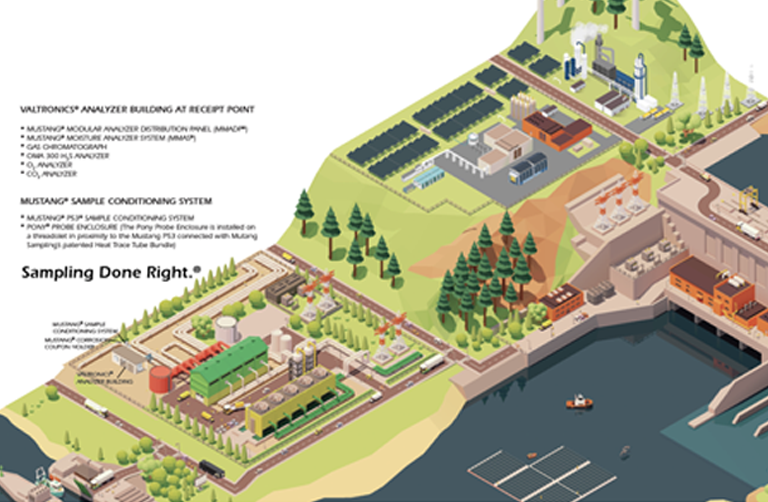Kenneth O. Thompson, CEO & President of Mustang Sampling to speak at the 2024 Appalachian Hydrogen & Carbon Capture Conference on the topic of hydrogen measurement, analysis and how it is particularly challenging within the current pipeline framework.
Currently the production of hydrogen gas through electrolysis is possible, which ultimately means hydrogen is ready to be introduced into the natural gas network.
The rise of natural gas as a source of fuel to produce electricity is well known and continues to gain traction globally. The standards and practices associated with natural gas measurement and analysis have been based on the flow of gas from fossil origins in production fields, to gas plants, to transmission pipelines and distribution systems in a very predictable fashion. Recently the goal to reduce carbon emissions further and to eliminate global dependence on fossil fuels has fostered the introduction of Renewable Natural Gas (RNG) and Hydrogen (H2). Additionally, as renewable (and often “excess”) electricity is produced from solar and wind farms, the production of hydrogen gas through electrolysis is possible, which ultimately needs to be introduced into the natural gas network. These two changes in the production of gaseous fuels into the traditional pipeline system require modifications to existing measurement and analysis techniques.
Hydrogen measurement and analysis is particularly challenging within the historical framework. Since hydrogen gas is not normally present in fossil fuel mixtures, most analyzers assume it is not present (therefore do not detect it) and in many cases use hydrogen as part of their own process, rendering any measurement useless. For example, if a gas chromatograph uses hydrogen as a carrier gas, the detection of hydrogen in the sample stream becomes very complicated. The problem has been exacerbated recently as helium (another common carrier gas) has become scarce and many end users have converted their analyzers to use hydrogen.
“The measurement of hydrogen and its safe handling within measurement and analyzer systems continues to be a challenge.” Commented Thompson. “Hydrogen is highly reactive and requires attention since it permeates metals and elastomers. There is also an enhanced fatigue growth in steel pipe, and the composition of blended gas changes in storage. While Hydrogen suppliers and transporters would like to be able to move product into the natural gas pipeline now, it will take time to modify gas chromatographs and other analyzers to handle H2.”
“We are pleased to have Ken speak again at this year’s Appalachian Hydrogen & Carbon Capture Conference VI,” commented Tom Gellrich, President & CEO, H2-CCS Network.
Safety will remain the primary objective of the natural gas (or otherwise) transportation and distribution industries for decades to come. As such, measurement and analysis systems will continue to evolve rapidly to evaluate the ever-changing landscape of energy sources.
